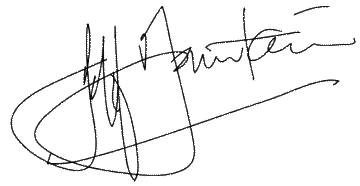The fifth of a series from Paul’s time to today via the Moravian church, in preparation for the Festival of the Nations in Herrnhut, May 25-28, 2007
As the year 1727 opened, the little town of Herrnhut was a nest of quarrelling and bickering dissidents. The original rag-tag bunch of refugees had been allowed to settle on a rolling hillside, close to where Germany, Poland and today’s Czech Republic meet. Over five years it had grown into a religious haven for separatists and exiles from many backgrounds: Catholic, Reformed, Anabaptist and Lutheran, as well as Moravian.
Dissidents by nature are strong-willed and discord was to be expected. The initial settlers were descendants of Hussites, followers of Jan Hus. Their roots were in the Unitas Fratrum, the Ancient Moravian Church, dating back to 1457. Catholic domination of Bohemia and Moravia forced the Brethren underground, or, like Comenius, over the border to Poland.
Those who stayed behind continued to worship in secret. They never stopped praying for the revival of their church and the restoration of free worship.
Christian David, a young Moravian Catholic, came to personal faith in Jesus while working in Görlitz, Silesia (on today’s German -Polish border). At great personal risk, David returned home to tell others about Jesus and to help the Brethren find refuge.
One day, back in Silesia, he met a young Saxon nobleman named Count Nicolas von Zinzendorf. After hearing David’s story and of the plight of the Moravian Brethren, the count offered for them to settle temporarily on his own estate near Berthelsdorf. David wasted no time rushing back to bring his friends under the cover of darkness across the border into Saxony.
Haven
There they began to chop down trees to build houses. Zinzendorf’s steward updated the absent count about the new construction on the slopes of Hutberg (Watch Hill), and wished for the town to ‘abide under the Lord’s Watch’ (Herrnhut).
Soon refugees from other backgrounds heard of the ‘safe haven’ and joined the original Moravians. Arguments about communion, liturgy, pastoral oversight and relationship to the local Lutheran church began to sow dissension. One newcomer named Kr√ºger even called the count ‚ÄòThe Beast‚Äô, and Pastor Rothe from the Lutheran Church in nearby Berthelsdorf, the ‚ÄòFalse Prophet‚Äô.
The fledgling community threatened to fall apart. But early in the new year of 1727, Krüger suffered a breakdown and left. The 26-year-old count decided to step in himself to restore harmony and leadership to Herrnhut.
Zinzendorf himself was Lutheran and had studied at the Pietist school of Halle. As a 15-year-old, he and some friends had formed ‘The Order of the Mustard Seed’, a sort of spiritual knighthood pledged to love the whole human family. Among those who later joined this order were Archbishop Potter of Canterbury, Cardinal de Noailles of Paris, Governor Oglethorpe of Georgia and King Christian VI of Denmark.
While on his Grand Tour of European cities as part of his aristocratic grooming, young Zinzendorf had been greatly moved by a painting of the crucifixion in a gallery in Düsseldorf,. Germany. Under the title Ecco Homo, he read the words: All this I did for you; what will you do for me?
A decade later, Zinzendorf now realised what his Saviour wanted him to do. Taking furlough from state duties, he began visiting each family of the Herrnhut community, just across the fields from his own homestead. As winter gave way to spring, the count won their trust and rekindled a spirit of unity. Eventually all agreed to a Brotherly Agreement, stating that ‘Herrnhut shall stand in unceasing love with all children of God in all Churches, criticise none, take part in no quarrel against those differing in opinion.’
By the summer, a new spirit of prayer had developed in the community. Meanwhile Zinzendorf chanced across a book in the library of Zittau by a man whose name his settlers had often mentioned: Comenius. As he scanned the pages of The Order of Discipline, he began to realise whose story he was reading: the people now living on his estate! Now he could understand their longing for the restoration of their church–and what his own role should be in that renewal. With great anticipation, he returned to Herrnhut to share his discovery.
Fellowship
Everyone now sensed God was doing something new. Pastor Rothe invited the whole community to the Lord’s Table on Wednesday, August 13. Zinzendorf visited each community member in preparation for the first communion since the months of discord.
As Pastor Rothe began the service, some started praising and weeping. God the Holy Spirit was clearly present in a deep and special way. Confession and forgiveness flowed. And when the service officially ended, clusters of communicants continued to fellowship together, savouring God’s presence. ‚ÄòFrom this day on‚Äô, wrote one historian, ‚ÄòHerrnhut became a living congregation of Jesus Christ.‚Äô
The new unity was expressed in a community lifestyle of worship, servanthood, love feasts, foot-washing ceremonies, and a 24-hour prayer chain unbroken for almost one hundred years! The Herrnhutters began to receive in prayer a big vision of God’s heart for the unreached peoples of the world.
Five years later, this small community of a few refugees began to send out missionaries to the Caribbean and Surinam, to Lapland and Greenland, to Morocco and South Africa, to Russia and Turkey, to Georgia and to Pennsylvania. By the time Zinzendorf died in 1760, it is said that this revived Moravian Church had done more for world missions than all the other protestant churches combined.
As they began spreading out across the world, they greatly influenced and inspired others. One was a young English clergyman en route to America, whose encounter with Moravian missionaries on a ship was to have global consequences….
Till next week,
Jeff Fountain
Till next week,
